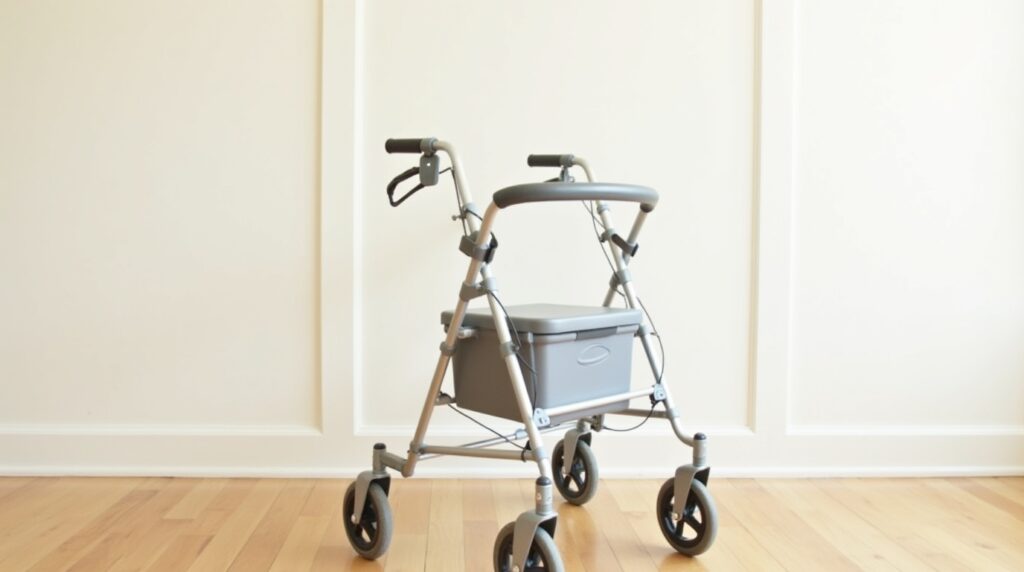Mobility is not just about movement—it’s about maintaining independence, dignity, and the freedom to engage with the world on your own terms. For individuals with mobility challenges, walkers have become indispensable tools. But modern life calls for more than just support—it demands convenience, adaptability, and confidence. That’s where foldable walkers with wheels shine. Contrary to the misconception that “foldable” means flimsy or unreliable, today’s designs prove that strength and portability can coexist beautifully.
In this blog, we’ll take a closer look at how foldable walkers with wheels are engineered for durability, comfort, and everyday practicality. Whether you’re researching for yourself, a loved one, or a client, this guide will shed light on the impressive strength hidden in compact frames.
Why Foldable Walkers with Wheels Are Gaining Popularity
As lifestyles become more dynamic, assistive mobility devices have evolved to match the pace. Foldable walkers with wheels offer a versatile solution for seniors, people recovering from surgeries, or anyone needing light to moderate support while walking.
Key Reasons for Their Popularity:
- Portability: Easy to fold and store in cars, closets, or under beds.
- Lightweight design: Easier to lift, carry, or transport.
- Ease of use: Ideal for both indoor and outdoor use, with smoother movement thanks to wheels.
- Space-saving: Perfect for travel or limited living spaces.
But there’s one lingering question that skeptics often ask: Are they strong enough?
Debunking the Myth: Foldable ≠ Fragile
It’s easy to assume that anything collapsible might be less durable. After all, when we think of something foldable, we often think of camping chairs or temporary furniture. However, when it comes to mobility aids—especially walkers with wheels—this couldn’t be further from the truth.
Built with Purpose
Modern foldable walkers are engineered with specific user needs in mind. These aren’t casual-use items—they’re essential daily tools. Manufacturers have invested in high-grade materials, ergonomic testing, and real-world feedback to create devices that support substantial weight without compromising stability.
Materials Matter
Let’s look at the components that give foldable walkers their strength:
- Aluminum frames: Lightweight but incredibly strong, aircraft-grade aluminum is often used. It resists rust and holds up to daily use with ease.
- Reinforced joints: Hinges and folding mechanisms are designed to lock securely, preventing unwanted collapse.
- Durable wheels: Rubberized wheels absorb shock and provide smooth gliding on various surfaces, including sidewalks, tiles, and carpet.
Engineering Strength: How Design Enhances Durability
Walkers aren’t just metal frames with wheels—they’re feats of engineering. Foldable walkers with wheels incorporate smart design choices that ensure safety and reliability.
1. Dual Cross-Brace Frames
Some high-end walkers feature cross-braces that run in an “X” shape across the front and back of the frame. These distribute weight evenly and minimize wobbling.
2. Precision Folding Mechanisms
A quality foldable walker locks into place when open and won’t collapse under weight. Some models use push-button or trigger-release systems that are both easy for seniors to operate and highly secure when in use.
3. Wheel Placement and Size
Wheels aren’t just slapped on for movement—they’re strategically placed to optimize balance. Larger front wheels provide smoother outdoor navigation, while smaller rear wheels allow for tight turning indoors.
4. Weight Capacity
Don’t let the sleek frame fool you. Most foldable walkers with wheels support upwards of 250–300 lbs, with bariatric models offering support beyond 400 lbs.
Compact Without Compromise: User Comfort and Ergonomics
Durability is just one side of the equation. Comfort is equally critical—especially for users who rely on their walker for extended periods each day.
Ergonomic Handles
Many foldable walkers now include padded, contoured handles that reduce pressure on the wrists. This helps users with arthritis or joint pain use the walker comfortably.
Adjustable Heights
No two users are alike. That’s why top-tier models offer multi-level height adjustments, ensuring the walker supports proper posture and reduces fatigue.
Built-in Seats and Storage
Some foldable wheeled walkers double as rollators, featuring padded seats, backrests, and under-seat storage. This means users can rest when needed or carry essentials like medications, snacks, and water without additional bags.
Who Benefits Most from a Foldable Walker with Wheels?
While these walkers serve a broad audience, certain groups find them particularly helpful:
- Seniors looking to maintain independence
- Post-surgical patients (e.g., hip or knee replacement)
- People with neurological conditions (such as MS or Parkinson’s)
- Frequent travelers or active individuals
- Caregivers seeking an easier-to-store mobility solution
Foldable walkers can go anywhere—airports, shopping malls, doctor visits, or even out in nature—and they don’t take up unnecessary space when not in use.
How to Choose a Strong, Reliable Foldable Walker
With so many options on the market, how do you know you’re getting a well-built model? Here are some tips:
1. Check Weight Capacity
Always choose a walker that can comfortably handle the user’s weight, with a buffer. It’s better to choose a bariatric model if the user is close to the standard max capacity.
2. Examine the Folding Mechanism
Look for models that have secure locking systems. Avoid anything that feels loose or unstable when locked open.
3. Inspect Materials and Wheels
Aluminum frames and rubberized wheels are ideal. Avoid plastic-heavy models unless clearly reinforced.
4. Test for Stability
If buying in-store, test how the walker feels when leaning on it or turning corners. There should be no wobbling or rattling.
5. Look for Warranty or Brand Reputation
Reliable brands often offer warranties or satisfaction guarantees. Reading online reviews can also help you assess long-term durability.
The Future of Foldable Walkers: Tech-Forward and Stronger Than Ever
Innovations continue to enhance the walker market. We’re seeing:
- Smart walkers with braking systems and tracking sensors
- Carbon fiber frames that are ultra-light yet incredibly strong
- Shock-absorbing wheels for smoother rides
- One-hand fold technology for easier collapsing
These advancements prove that foldable doesn’t just mean functional—it can mean high-tech, robust, and user-focused.
Conclusion
The idea that foldable walkers are weak is outdated. Today’s models are carefully engineered to combine strength, stability, and convenience without compromising on design. Whether you’re aging gracefully, recovering from injury, or simply seeking extra support for daily walks, a foldable walker with wheels can be your trusted companion.


